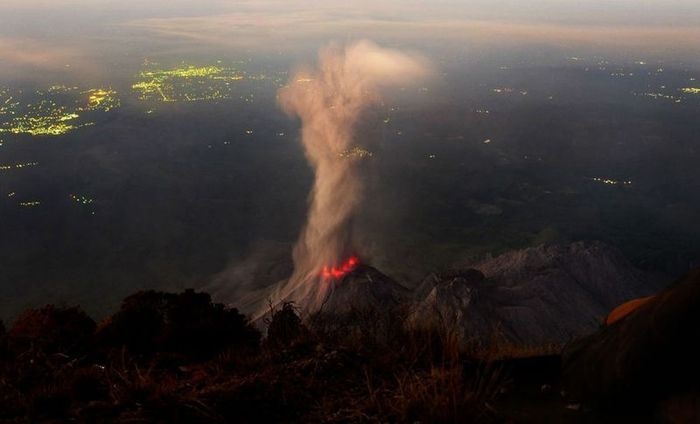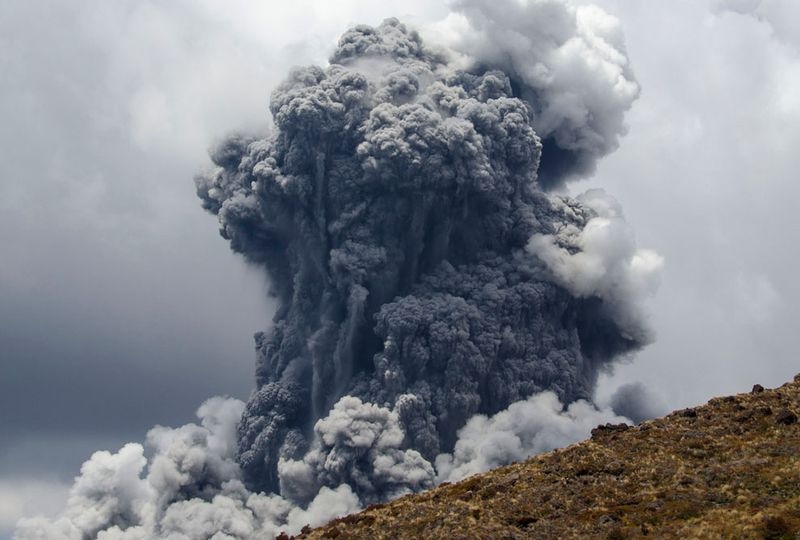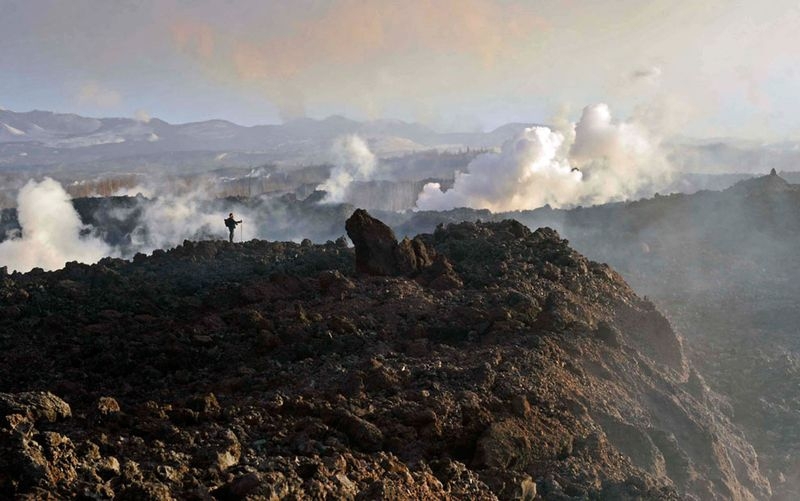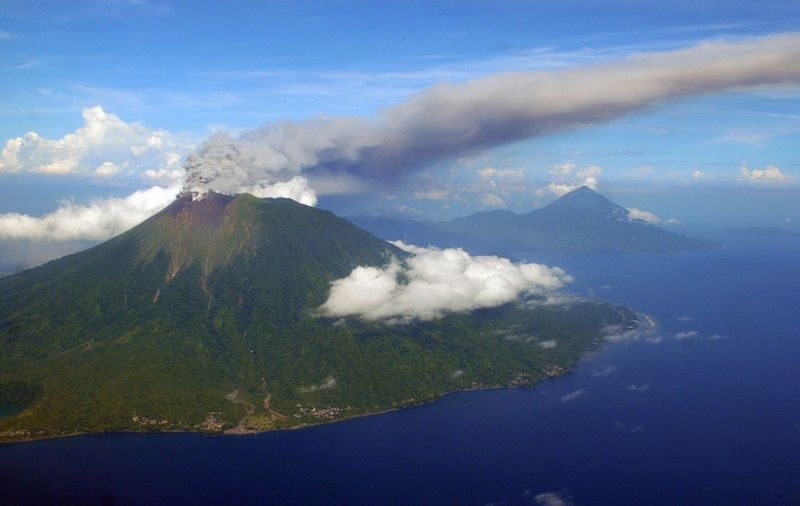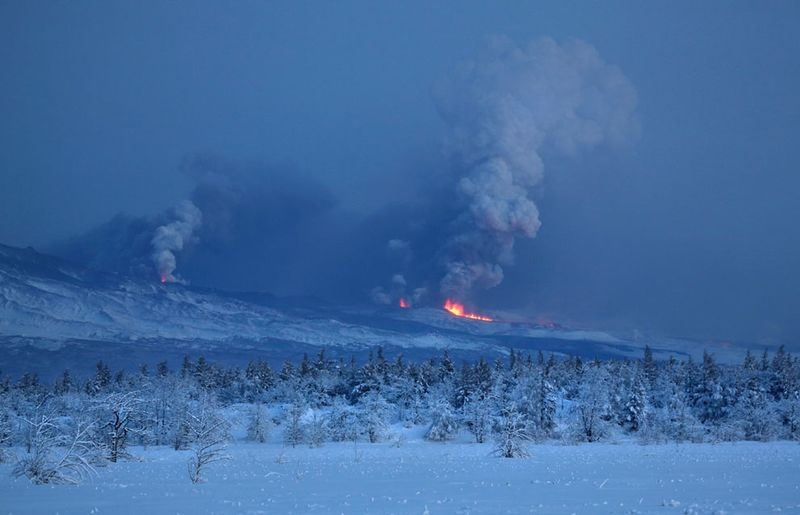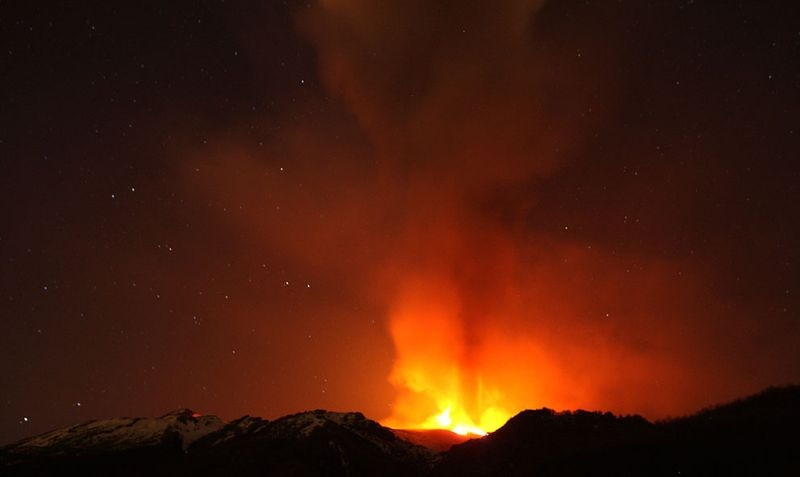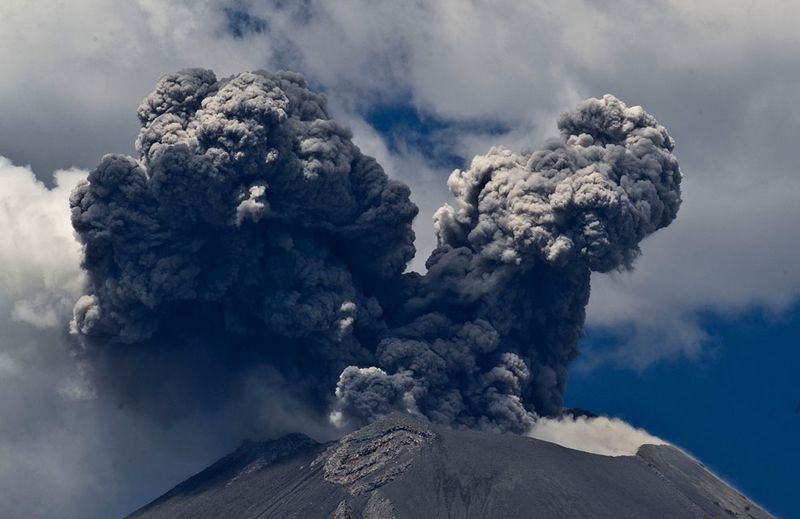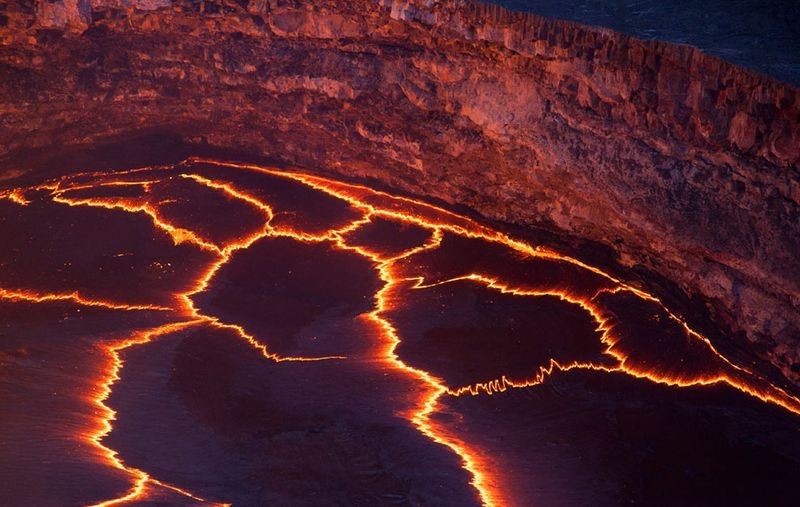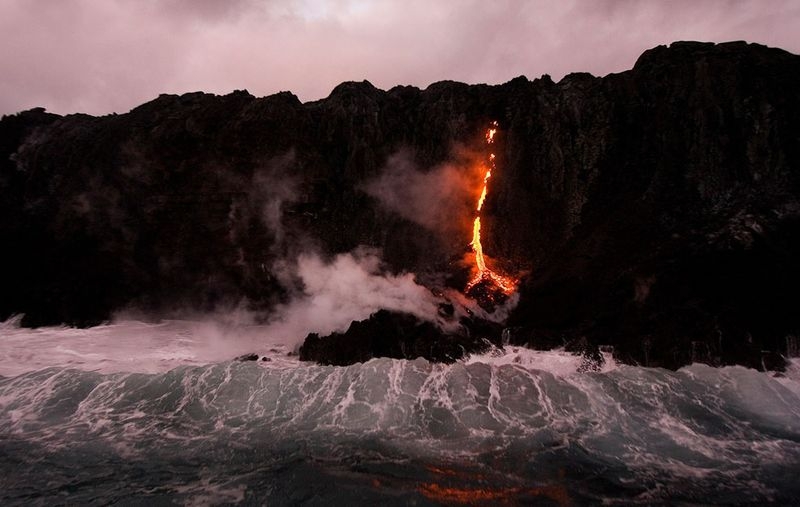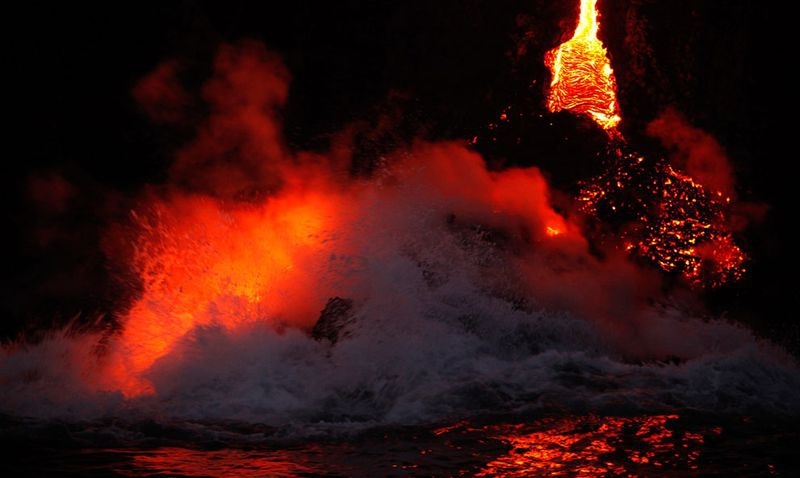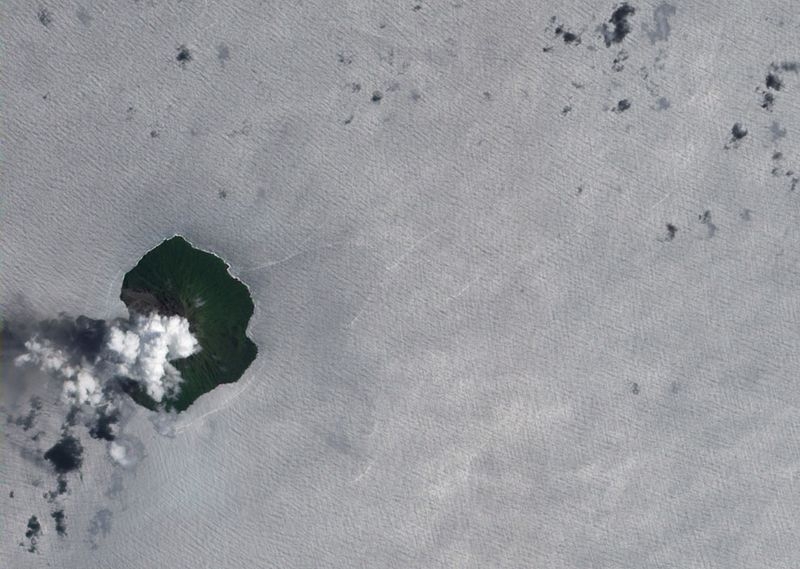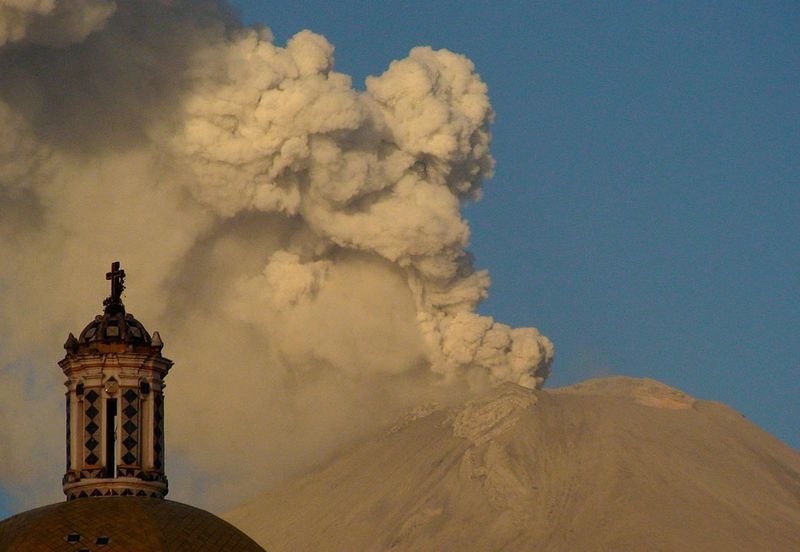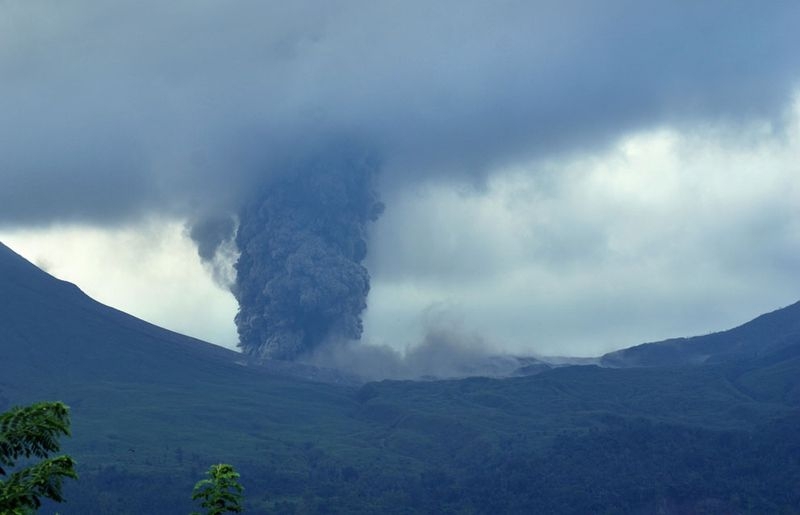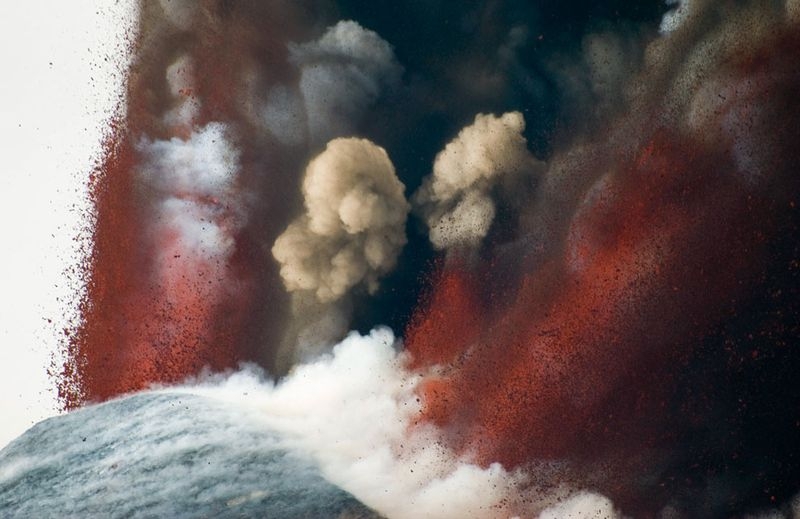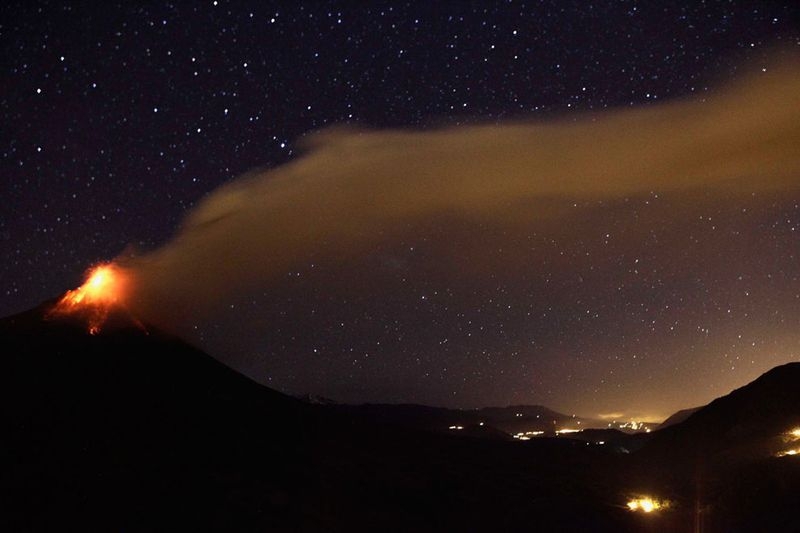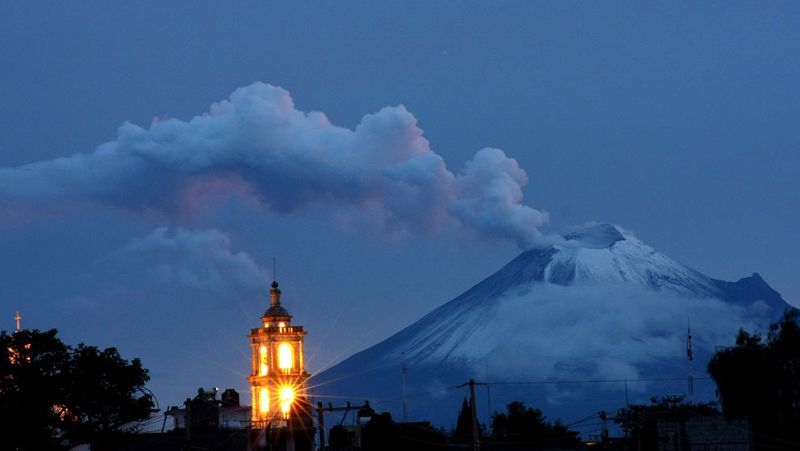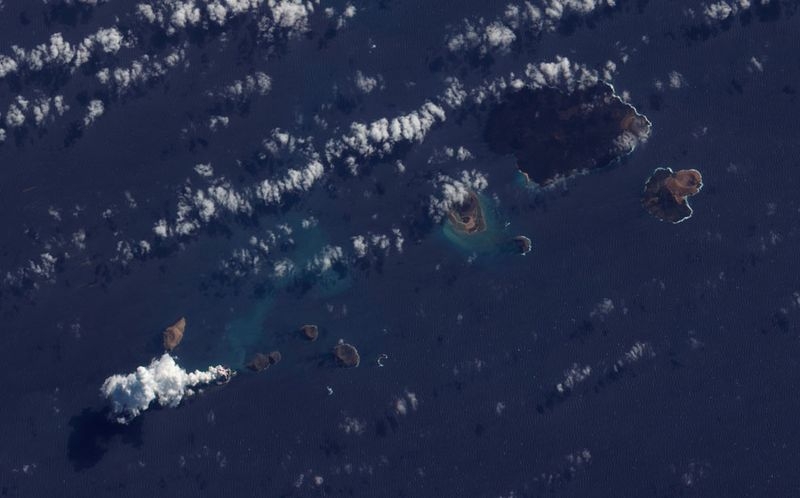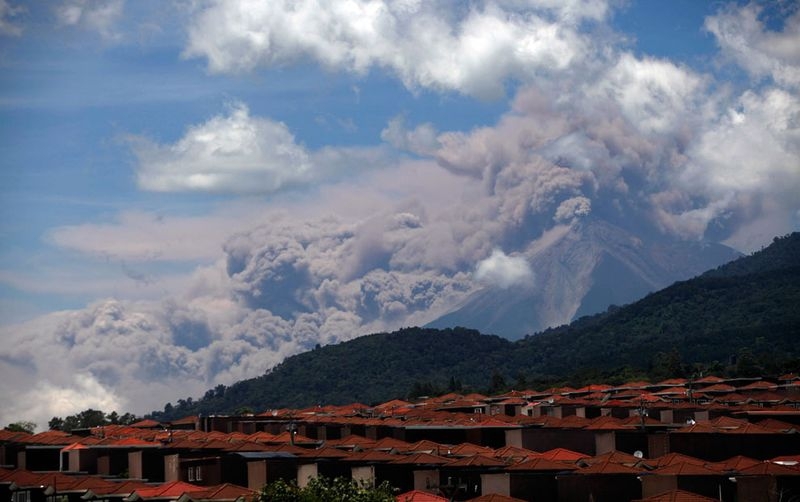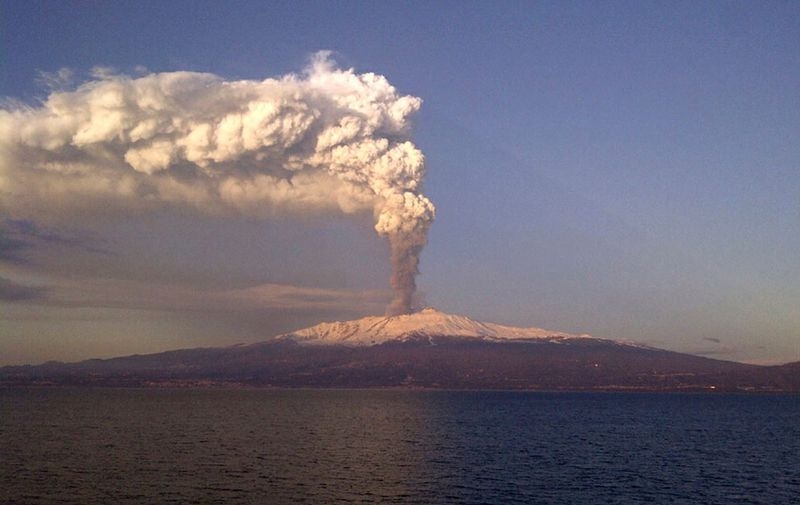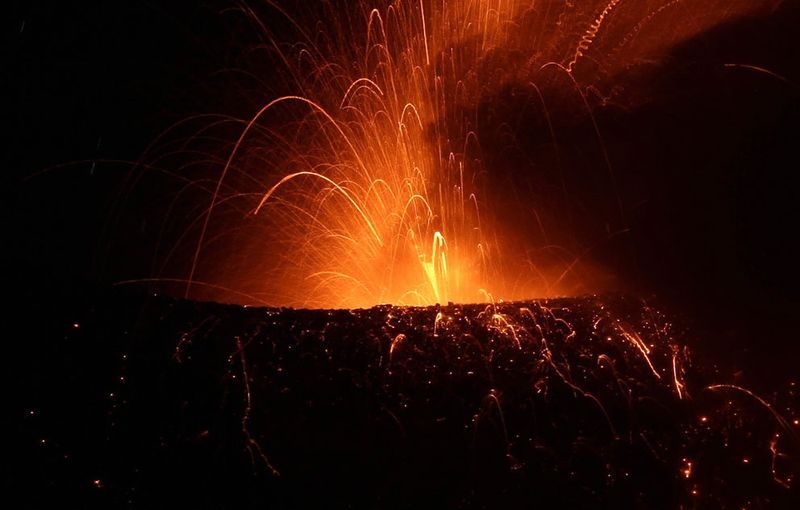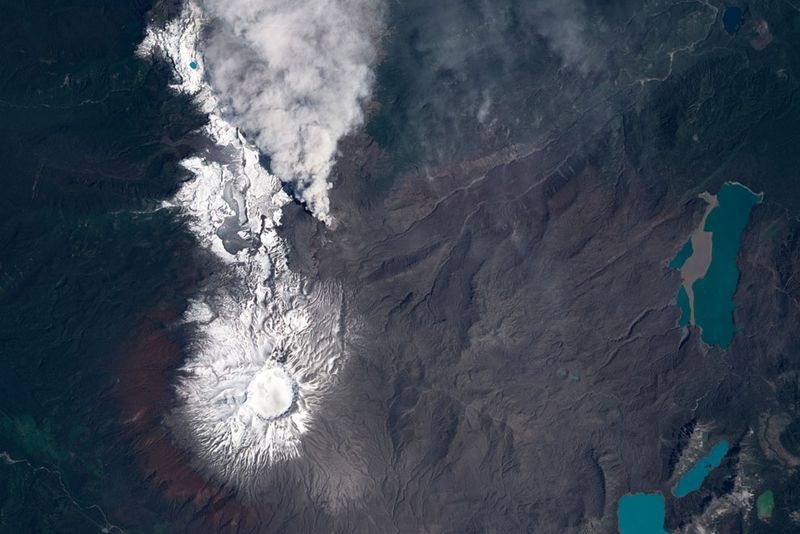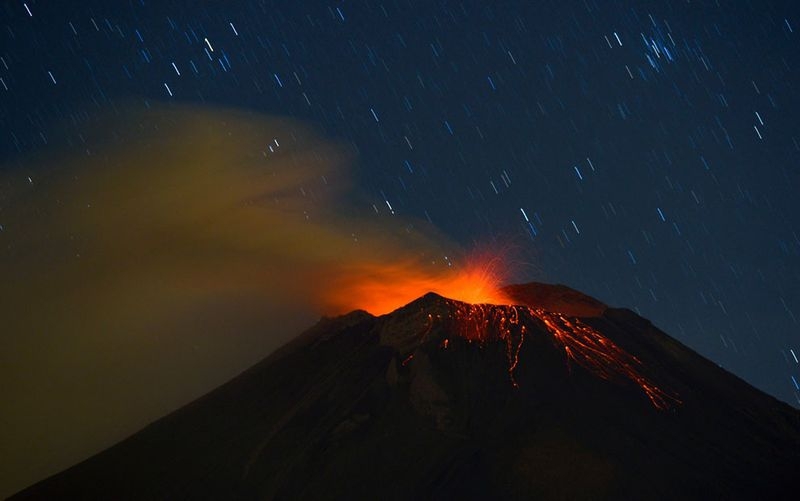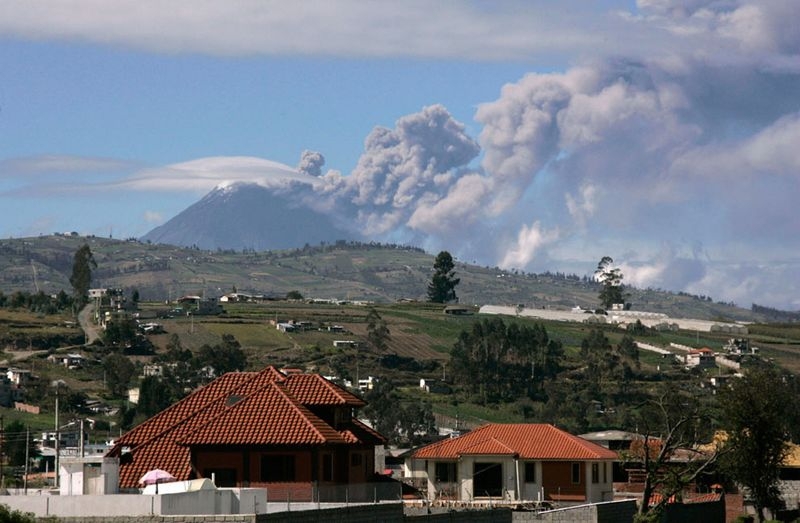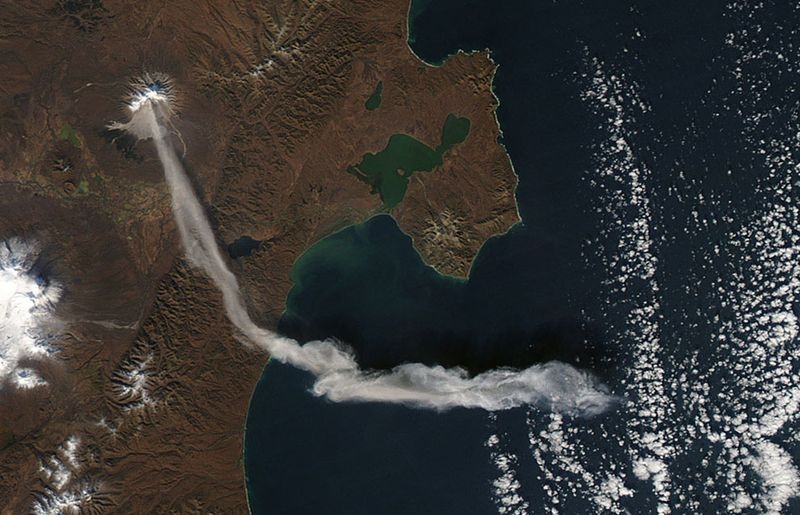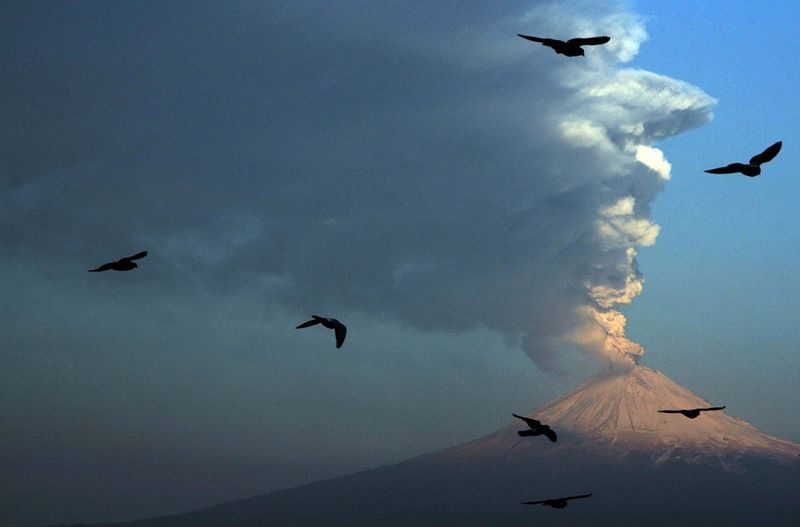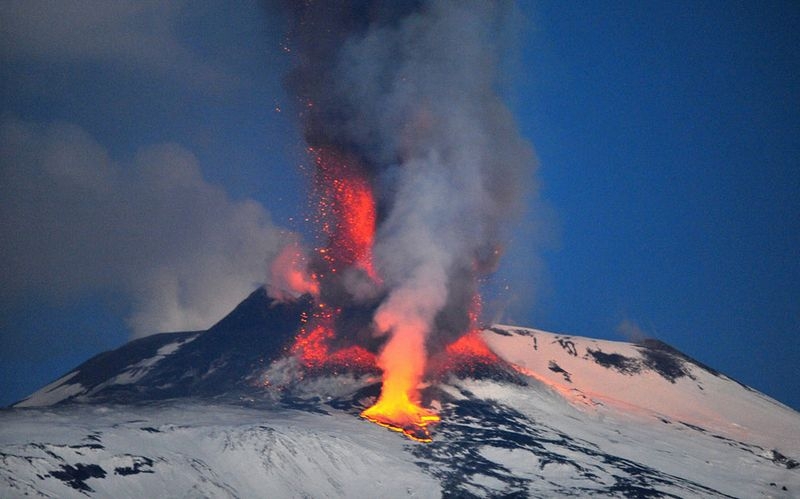557
26
In 2012 the most active volcanoes have been recorded in Guatemala, New Zealand, Russia, Chile, Italy, Hawaii, Mexico and the Red Sea, where even a new island appeared.
Take a look at the most active volcanoes of 2012.
Take a look at the most active volcanoes of 2012.
March 12, Santa Maria volcano, Guatemala. Ashes fell away 15km from the crater.
Tongariro Volcano, New Zealand emits a column of ash, the eruption began on November 21 and was the first in the last 100 years.
Flat Tolbachik volcano on the Kamchatka Peninsula, Russia. The eruption began on December 7. Photos by Alexander Petrov.
Indonesia's Mount Gamalama spews volcanic ash as it erupts on Ternate Island, on September 16, 2012.
On Russia's Kamchatka Penensula, Plosky Tolbachnik erupts on November 29, 2012. The volcano located on the peninsula's eastern coast, is erupting for the first time in 36 years.
Mount Etna spews volcanic ash during an eruption on the southern Italian island of Sicily, on April 1, 2012. Mount Etna is Europe's tallest and most active volcano.
Big clouds of ash and steam are spewed from the Popocatepetl Volcano as seen from the Santiago Xalitxintla, in the Mexican central state of Puebla, on April 25, 2012. Residents at the foot of Mexico's Popocatepetl volcano no longer sleep soundly since the towering mountain roared back into action, spewing out a hail of rocks, steam and ash. The volcano, Mexico's second highest peak at 5,452 meters, started rumbling and spurting high clouds of ash and steam on April 13, provoking the authorities to raise the alert to level five on a seven-point scale.
Incandescent lines mark the boundaries between migrating crustal plates on the surface of the lava lake in Kīlauea's Halema'uma'u crater, on the Big Island of Hawaii, on October 22, 2012. Here, and at other lava lakes across the world, these rifting zones have a characteristic zigzag pattern.
Waves crash over lava as it flows into the ocean near Volcanoes National Park in Kalapana, Hawaii, on November 27, 2012.
Tinakula is a small, volcanic island in the South Pacific, located about 2,300 kilometers (1,400 miles) northeast of Brisbane, Australia. This natural-color satellite image shows a plume of volcanic gas, possibly mixed with a bit of ash, rising above the island's summit. Around the island, the reflection of sunlight on the ocean -- sunglint -- gives the surface a milky appearance that makes the wave patterns readily visible.
A plume of smoke rises from the Popocatepetl volcano as seen from Cholula, in the Mexican state of Puebla, on May 24, 2012. Popo, as the volcano is commonly known, has put out small eruptions of ash almost daily since a round of eruptive activity began in 1994. The Nuestra Señora de los Remedios or Our Lady of Remedies church stands in the foreground.
Mount Lokon volcano spews a giant column of volcanic ash during an eruption seen from Tomohon town located in Sulawesi Island, Indonesia, on October 7, 2012. The 1,580-meter Mount Lokon erupted at 2 pm on October 7, and was heard as far as five km away. The volcano experienced its biggest eruption last year, in July, when more than 5,200 people were evacuated as it sent huge clouds of ash as high as 3,500 meters (11,500 feet) into the sky.
Snowcapped mount Etna erupts not far from Zafferana Etnea village, in Italy, on April 12, 2012. The southeastern crater, "born" in 1971, has been the most active in the last few years. In the recent past lava flows have mainly damaged properties, but due to its slow speed lava has not killed human beings.
Ecuador's Tungurahua volcano spews a large cloud of ash over the nearby town of Bilbao, on August 21, 2012. Authorities encouraged residents living near the volcano to evacuate due to increased activity of the volcano, according to local media. Tungurahua has been in an active state since October 1999.
Ash and steam spew from Popocatepetl volcano in Panotla community, Mexico, on September 30, 2012.
Late last year, evidence made it appear likely that this newly-formed volcanic island might become a permanent land feature, as it continued to grow. The island, rising in the Red Sea, is part of a group of islands called the Zubair Group, belonging to Yemen. Newly-formed volcanic islands can often wash away within years, but within a span of a few months, this as-yet-unnamed island grew to approximately 530 by 710 meters (1,700 by 2,300 feet).
Volcanic ash spews from the Volcan de Fuego or Volcano of Fire as seen from Palin, south of Guatemala City, on September 13, 2012. The long-simmering volcano exploded into a series of powerful eruptions, hurling thick clouds of ash nearly two miles high, spewing rivers of lava down its flanks and forcing the evacuation of more than 33,000 people from surrounding communities.
Mount Etna spews volcanic ash during an eruption on the southern Italian island of Sicily, on January 5, 2012.
Ecuador's Tungurahua volcano spews lava, ash and pyroclastic material into the air, on August 21, 2012.
After last year's explosive eruption of Chile's Puyehue-Cordón Caulle Volcano, many more smaller eruptions took place, into early 2012. This image from December 23, 2011 shows a minor eruption, with a large field of gray ash, and huge rafts of pumice still floating on the surface of nearby lakes.
Ecuador's Tungurahua volcano spews volcanic lava, accompanied by large clouds of gas and ash near Banos, about 178 km (110 miles) south of Quito, on May 23, 2012.
Shiveluch Volcano, on Russia's Kamchatka Peninsula, erupted on October 6, 2012, sending a plume of ash high into the air, carried first south, then east, as winds shifted. Shiveluch is one of the biggest and most active volcanoes on the Kamchatka Peninsula.
Birds fly in the foreground as a plume of ash and steam rise from Popocatepetl volcano as seen from San Andres Cholula, Mexico, on April 18, 2012.
Lava flows from a crater of the giant Etna Volcano on the southern Italian island of Sicily, on January 6, 2012. A column of hot ash spewed high into the sky on January 5, as Europe's highest active volcano rumbled back to life.
реклама


